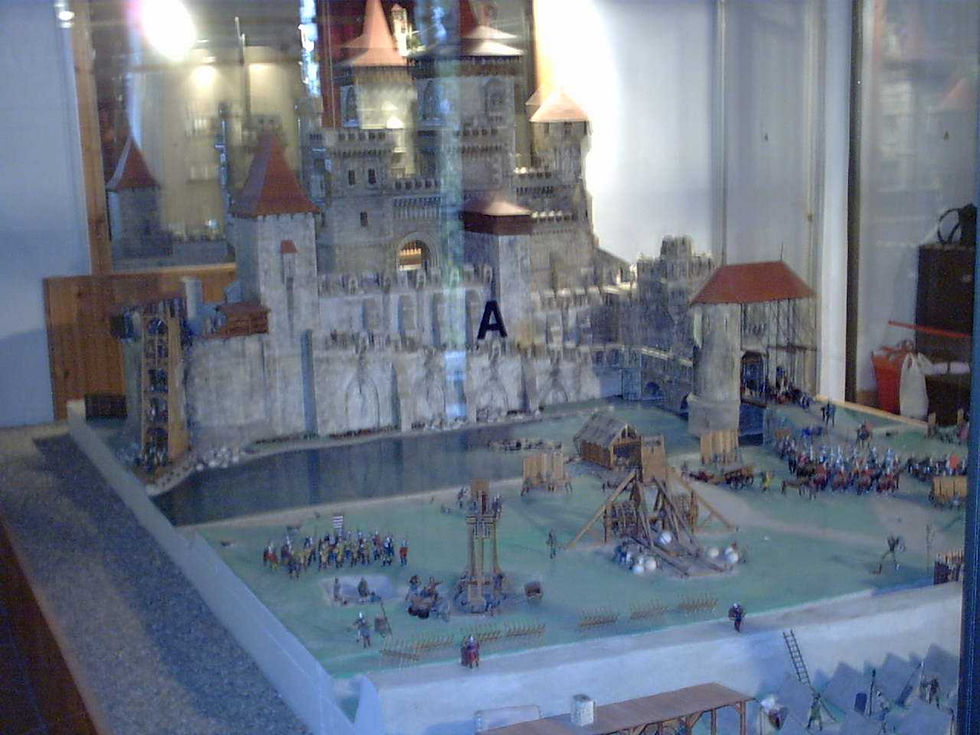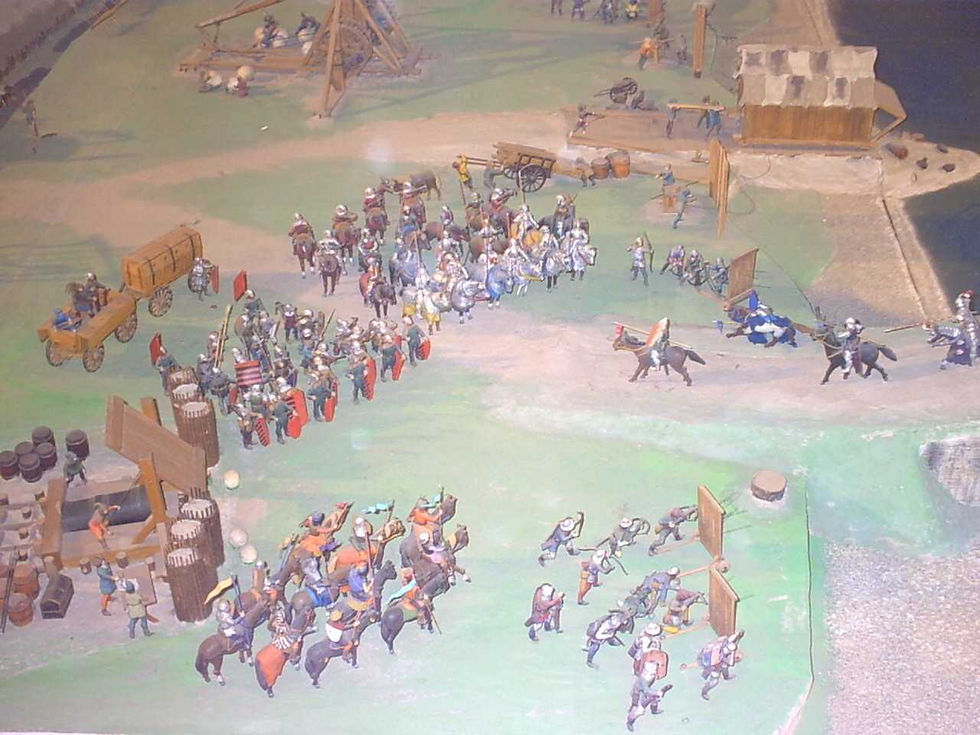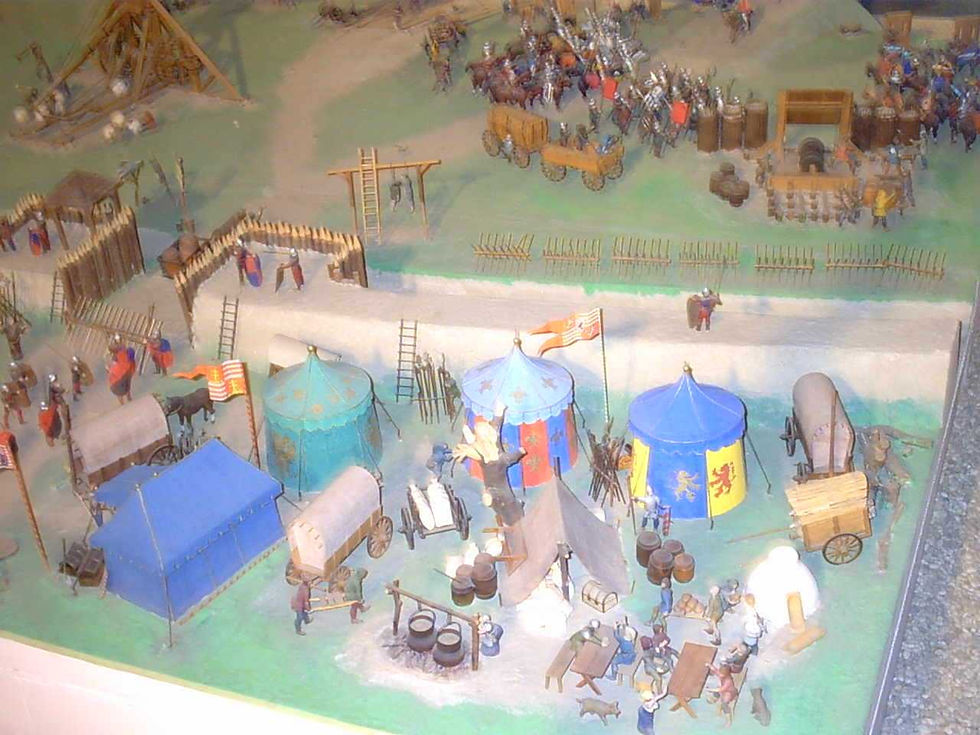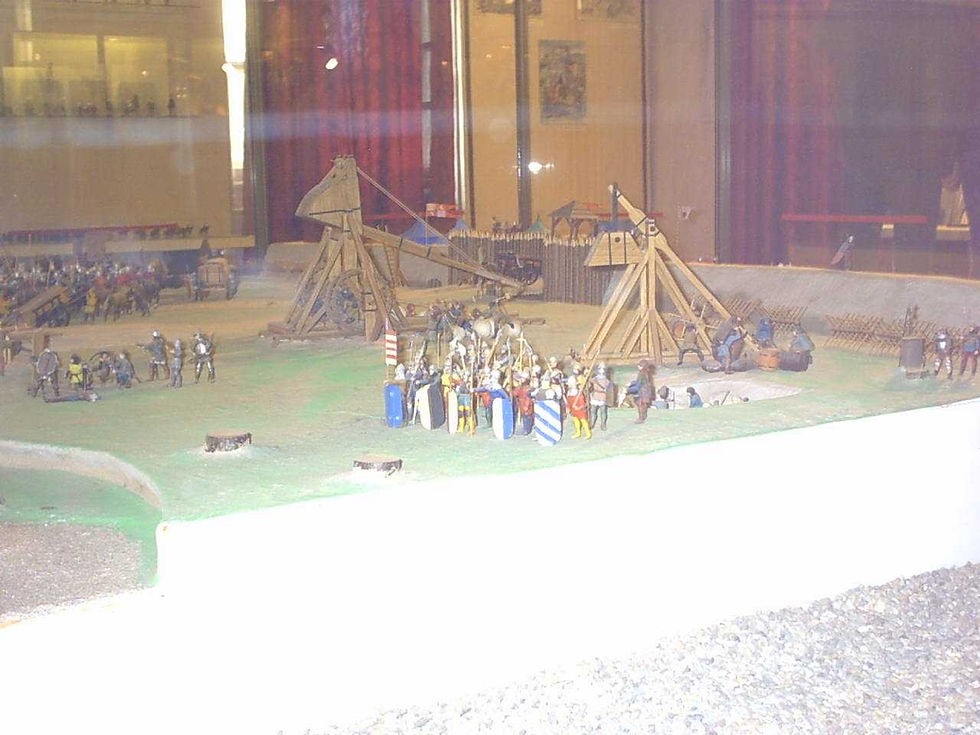Project Restarted: The Hungarian "Black Army"
- Albert Leung
- Jul 21, 2016
- 2 min read

It is the army that I used in the 2015 ITC. I was planned to paint the whole army but finally I painted only the 4 Kn(S) in wedges. It is the I am lucky enough to lend the army from my team mate James, for the tournament.
The Black Army, also called the Black Legion/Regiment – possibly after their black armor panoply – is a common name given to the military forces serving under the reign of King Matthias Corvinus of Hungary (or the Corw King). While at that time soldiers are recruited and trained from common people, the Black Army is a group of professionally trained mercenaries who fight for money. The men of the Black Army fought as well-paid, full-time mercenaries and were purely devoted to the arts of warfare.

In the beginnings, the core of the army consisted of 6–8,000 mercenaries. In the 1480s, the number was between 15,000 and 20,000, however the figures reached to 28,000 men (20,000 horsemen, 8,000 infantry) in 1487. The soldiers were mainly Bohemians, Germans, Serbs, Poles and, from 1480, Hungarians.
The elite status of the Black Army knights are represented in DBMM as Kn(S) in wedges. It is one of the most powerful units in DBMM
The army I am going to build consists of the following
Command A - CinC RKn(S), RKn(S) x 2, RBd(O) x 2, RPs(O) x 6, RPs(S) x 8, RWWg(O) x 3, RArt(I) x 2, IBg(I) x 2
Command B - SG RKn(S)w, RKn(S)w x 2, ILH(O) x 6, IBg(I) x 2
Command C - SG RKn(S)w, ILH(F) x4, IBg(I)
Command D - SG ILH(S), ILH(S) x 6, ILH(F) x 4, IBg(I) x 2

The project is restarted and I will put more work in progress in this blog.
Tactics
Hungary's mix of Knights with essentially Asiatic horse archers created a style of tactics broadly similar to that of Poland and the Serbians. The aim of Hungarian tactics was to create situations where the charge of the knights would be decisive. The light horse were used in open battle to clear away enemy skirmishers and prevent those of the enemy interfering with the deployment and charge of the knights. Knights through out the period either deployed in multiple lines or in deep columns. This mirrors the developments in Polish tactics. Both styles of deployment allowed maximum manoeuvrability for the Knights and provided reserves to prevent encirclement by hostile light horse.
The Hunyadi period saw a shift along the lines of the Polish armies, infantry came to play an important supporting role. Like the Polish armies the Hungarians used infantry and Tabor wagons to create a strong centre from which their cavalry could operate and anchor their internal flanks. Bonfinius describes a Hungarian battle formation called the scorpion where infantry formed its body and the warwagons and cavalry formed the pincers. This brief description sounds very much like the Polish Crescent formation (it being based on the Mongol Grand Hunt). The objective was to sweep away the enemy flanks or force them inwards and crush their centre on the hvy infantry and wagons of the centre.
Pictures are from the Military Museum of Hungary in Budapest.
54mm model of Matthius' army besieging a Austrian castle








Comments